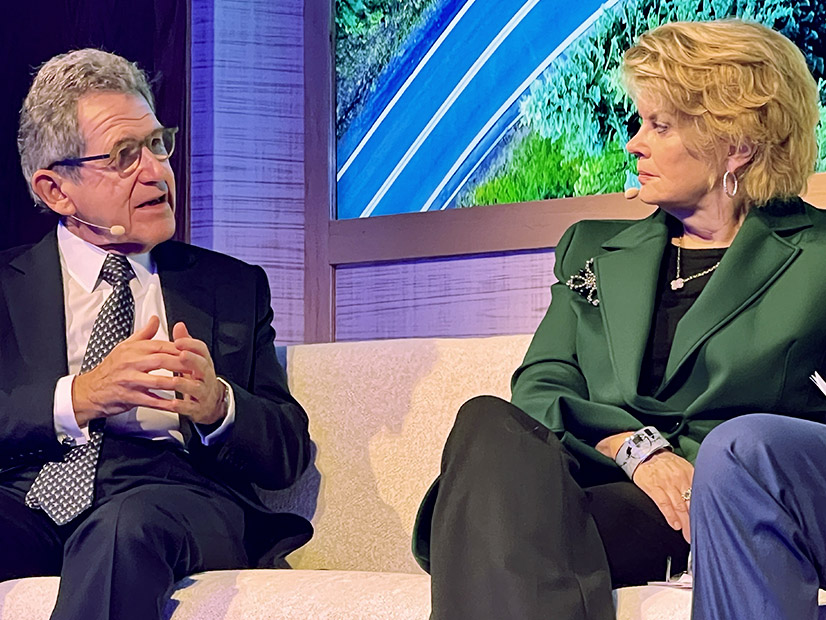Many generator owners (GOs) are not following NERC‘s recommendations for improving the performance of inverter-based resources (IBRs), and new reliability standard projects and other regulatory actions may be needed to enhance these generators’ reliability, according to the findings of a Level 2 alert the ERO released Nov. 30.
NERC issued the alert in March, providing a series of recommendations that GOs were “strongly encouraged to adopt.” (See NERC Issues Level 2 Alert on IBR Issues.) Recipients were required to respond to a series of questions about their grid-connected solar facilities (if any). While the topic of the alert was solar subject to NERC standards, the ERO said in Thursday’s report the recommendations may be applicable to other IBRs including wind and battery energy storage systems.
Entities initially were required to submit their responses to the alert by June 30, but NERC said it had received only 15 submissions by the due date, which the ERO called an “unprecedented and unexpected low response rate.” As a result, the deadline was extended to July 31. By the end of the extension, NERC received 1,149 responses, for a response rate of about 97%.
A total of 217 entities reported owning one or more grid-connected solar facilities. The greatest number of positive responses, 85, came from entities in WECC. SERC Reliability followed with 59, and the Texas Reliability Entity came next with 45. Also, 18 entities in ReliabilityFirst reported having applicable resources, followed by eight in the Midwest Reliability Organization and just two in the Northeast Power Coordinating Council.
Difficulties Obtaining Needed Data
All but three utilities with grid-connected solar resources submitted responses to the alert’s questions by the extended deadline, despite “anecdotal comments [that] indicated that the data was difficult to obtain,” NERC said. GOs reported needing “significant assistance from OEMs [original equipment manufacturers] or consultants,” but OEMs and consultants themselves said they also had problems getting needed information from GOs and each other.
The quality of data submitted was questionable even though most worksheets were technically complete, the report said, with analysis of the responses showing “significant and numerous instances of misunderstanding … the information requested.” In one case, a GO said its inverter manufacturers had not “experienced instances of inadvertent tripping at other facilities” even though its equipment had been “documented to be involved in past major disturbances.”
NERC said it developed the worksheet questions based on input from industry groups and experience from multiple IBR events analyzed by the ERO Enterprise, under the assumption that GOs “would have the requested information available to submit with relative ease.” That such issues exist within the submissions casts “doubt on the accuracy and quality of the submitted modeling data used in reliability studies,” which also would come from GOs, the ERO added.
NERC’s analysis of the data indicated widespread deviations from the ERO’s guidance. For example, about 2,260 grid-connected solar facilities have voltage and frequency protection settings within the “no-trip zone” defined by NERC’s reliability standard PRC-024-3 (Frequency and voltage protection settings for generating resources). While the standard allows for protection settings to border and enter the no-trip zone in some circumstances, NERC said the facilities in question are “at an elevated risk of tripping during [grid] disturbances.”
The ERO also found that less than a third of solar facilities’ protection settings were based on the maximum capability of the equipment, indicating that “there is significant underused ride-through capability across the” electric grid and raising concerns about the availability of reliability services as traditional generation sources are retired. Additionally, about 27% of the solar fleet by MW is not configured with NERC’s recommended ride-through settings, though the report acknowledged that many of these facilities may be older and not capable of being modified.
New Standard Actions Recommended
NERC concluded many GOs and generator operators are providing “only the minimum [performance] as explicitly stated in FERC orders, regional requirements, and NERC reliability standards,” which can put the grid at risk of losing significant amounts of resources and essential reliability services.
One reason for the shortcomings identified by the ERO is the lack of uniform performance requirements for solar facilities. NERC said its Inverter-Based Resource Performance Subcommittee (IRPS) is developing a standard authorization request (SAR) to update FAC-001-4 (Facility interconnection requirements) and standardize performance requirements across North America. Two other standard projects — Project 2020-02 (Modifications to PRC-024) and Project 2023-02 (Performance of IBRs) — are expected to help with the performance deficiencies as well.
NERC also faulted “systemic deficiencies in the availability and understanding of facility information,” and recommended the IRPS draft a new SAR to introduce commissioning requirements for GOs of IBR facilities. The ERO further said its concerns about the quality of modeling data should be addressed as soon as possible.
NERC said it will issue another Level 2 alert next year to gather modeling and study information from GOs and transmission providers, and to “share recommended practices regarding modeling and study enhancements.” A Level 3 alert will follow “in the first half of 2024” with essential actions for GOs to address high-risk IBR issues.
